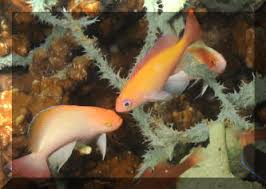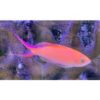The Dragon Symbol in Ancient Bronze Drum Decorations

Dragons have long held a prominent place in Asian cultures, symbolizing power, mystery, and a connection to the divine. One of the most fascinating manifestations of the dragon in ancient art is its depiction on bronze drums, particularly those from Southeast Asia. These drums, found in regions like Vietnam, Cambodia, and southern China, serve as important archaeological and cultural relics, and their decorations often feature intricate designs of dragons. This article explores the role of the dragon symbol in the decoration of ancient bronze drums, its cultural significance, and the role it played in rituals, artistry, and society.
The History and Significance of Ancient Bronze Drums
Ancient bronze drums, particularly those known as Dong Son drums, are among the most iconic relics of Southeast Asian history. Dating back to around 1000 BCE to 200 CE, these drums are believed to have been created by the Dong Son culture, located primarily in modern-day northern Vietnam. These drums were made of high-quality bronze and often feature highly detailed decorations, many of which include stylized representations of animals, geometric patterns, and most notably, dragons.
These drums were not merely musical instruments; they were symbols of power, wealth, and prestige. They were used in various rituals and ceremonies, such as agricultural festivals, military celebrations, and royal rites. The drums often had a central role in community events, and their decoration served not only as an artistic expression but also as a spiritual and cultural marker of the society that created them.
The Role of the Dragon in Dong Son Culture
The dragon in the context of Dong Son drums is not just a decorative element; it is deeply symbolic, representing the natural forces and spiritual beliefs of the time. In ancient East Asian cultures, the dragon was a creature of immense power and influence. It was associated with water, rainfall, and fertility—elements that were crucial to the agricultural societies of the time. For the Dong Son people, the dragon embodied these forces, playing a role in ensuring the prosperity and success of the community.
In Dong Son culture, dragons were often depicted in a stylized form, with coiled bodies, flowing tails, and intricate scale patterns. These images suggest the fluidity and movement of water, aligning the dragon with the river systems that were essential to agriculture in the region. The dragon also symbolized the ruler’s connection to divine authority, with its image often appearing on royal regalia, ceremonial objects, and even the drums themselves.
Dragon Imagery in Bronze Drum Decorations
One of the most striking features of Dong Son bronze drums is the intricate and stylized dragon imagery that adorns their surface. These dragons are often depicted in a dynamic, swirling motion, their bodies curled in tight spirals or flowing across the drum’s surface. They are typically shown with exaggerated features, such as large, open mouths and sharp claws, emphasizing their power and majesty.
The depiction of the dragon varies somewhat depending on the specific drum and region, but several common motifs can be found across many examples. The dragons are usually shown with their heads raised, as if to signify their dominance and control over the natural world. Their bodies often wrap around other elements of the design, such as geometric patterns or human figures, further emphasizing their importance and omnipresence in the lives of the people who created these drums.
In some cases, the dragon’s body appears to be intertwined with spirals or waves, reinforcing the connection between the dragon and the forces of nature, particularly water. This is likely a reflection of the agricultural importance of irrigation and rainfall in ancient Southeast Asia. The water symbolism is clear: the dragon is not just a mythical creature but a representation of the life-giving force of water that sustains crops and ensures the prosperity of the community.
The Symbolic Meaning of the Dragon in Ancient Rituals
Dragons were not only decorative motifs on bronze drums; they also held significant meaning in the religious and spiritual practices of the Dong Son culture. These drums were often used in rituals, and the dragon imagery played a key role in these ceremonies. Dragons were seen as intermediaries between the human world and the spiritual world, and they were believed to possess the power to connect the earthly realm with the divine.
In many Southeast Asian cultures, dragons were believed to bring rain, which was essential for agriculture. The dragon’s role in rituals related to the agricultural cycle was crucial, and it was often invoked during ceremonies to ensure a good harvest. The dragon’s presence on the drums symbolized the divine forces that governed the natural world, reinforcing the idea that the prosperity of the community was closely tied to the favor of these powerful beings.
Rituals involving bronze drums likely included offerings to the dragon, such as food, incense, or other symbolic gifts. The drums themselves may have been used in ceremonial contexts, where they were beaten in a rhythm that invoked the power of the dragon and its ability to bring rain and fertility to the land. This ritualistic use of the drum, combined with the dragon’s symbolism, underscored the deep connection between the natural world, the spiritual realm, and the daily lives of the people.
The Artistic Techniques Behind Dragon Imagery
The creation of bronze drums was an intricate process that required advanced metallurgical techniques and skilled craftsmanship. The dragon imagery on these drums was achieved using a combination of casting, engraving, and embossing techniques. The artisans who created these drums were highly skilled in their craft, and the dragon motifs they produced were not only visually striking but also deeply meaningful.
The design of the dragon on the drums was often raised or embossed, making it stand out from the surrounding patterns and adding a sense of movement and depth to the decoration. In many cases, the dragons’ bodies are shown in a flowing, almost serpentine motion, reflecting their association with water and fluidity. The scales of the dragon are often represented as finely detailed patterns, further emphasizing the intricacy and precision of the work.
The craftsmanship involved in creating these bronze drums demonstrates the advanced level of artistry and technology achieved by the Dong Son culture. The drums were not only functional objects but also works of art, and the dragon imagery played a key role in elevating their spiritual and cultural significance.
The Influence of Dragon Imagery on Later Art and Culture
The influence of dragon imagery on bronze drums extended far beyond the Dong Son culture. Over time, the dragon became a central symbol in many other cultures across East and Southeast Asia, including those in China, Korea, and Japan. The depiction of the dragon on Dong Son drums is thought to have influenced later representations of the creature in Chinese art, where the dragon became a symbol of imperial authority and divine power.
In China, the dragon was adopted as a symbol of the emperor, and it became associated with the ruling class. The dragon’s appearance on the imperial regalia, such as robes and thrones, reinforced the idea of the emperor’s divine right to rule. This connection between the dragon and the emperor can be traced back to the influence of the dragon motifs on ancient bronze drums, which were themselves symbols of power and prestige.
The dragon’s symbolic association with water and fertility also carried over into other cultures. In Chinese mythology, the dragon is often linked with rain and the harvest, much like it was in Dong Son culture. This continuity of symbolism highlights the enduring significance of the dragon across different cultures and time periods.
Conclusion
The dragon symbol on ancient bronze drums represents more than just a decorative motif—it is a powerful cultural and spiritual symbol that reflects the beliefs, values, and artistic achievements of the Dong Son culture. Through its connection to water, fertility, and divine power, the dragon became an integral part of the rituals and ceremonies that governed the lives of the people who created these drums. The intricate and stylized representations of dragons on these drums serve as a testament to the advanced craftsmanship and cultural sophistication of the Dong Son people.
As a symbol of divine protection, agricultural prosperity, and spiritual power, the dragon played a central role in the rituals and social practices of ancient Southeast Asia. Its influence extended beyond the Dong Son culture, shaping the artistic and symbolic traditions of many later civilizations. Today, the dragon’s legacy can still be seen in the art, mythology, and culture of East and Southeast Asia, where it continues to symbolize the connection between humanity and the divine forces of nature.

